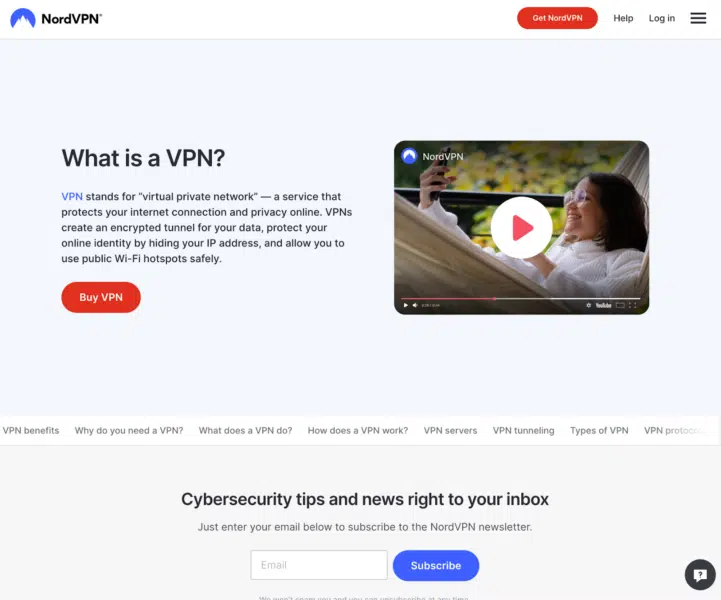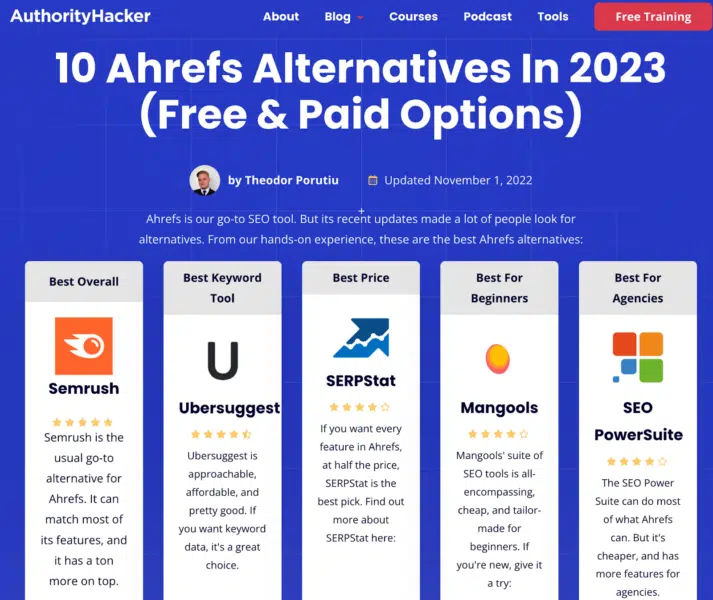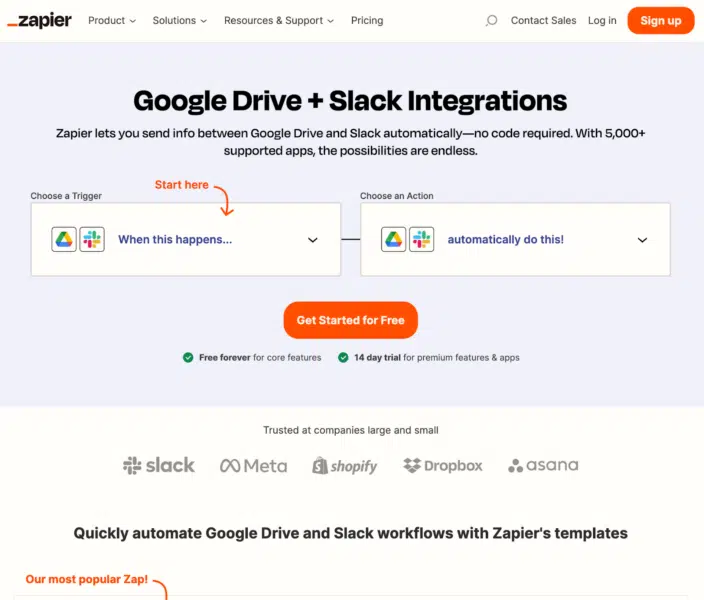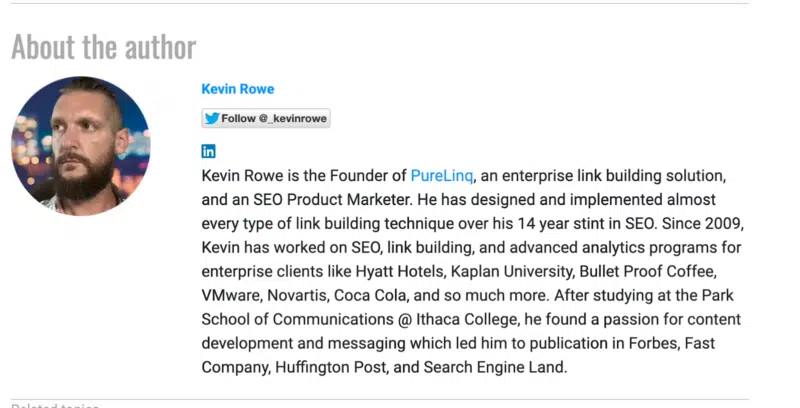10 ways B2B SaaS companies can use link building for better rankings
This list provides methods to identify link opportunities based on the type of content typical for SaaS brands.
The significant value of B2B content marketing is paving the way to the new wave of content-first link building.
A targeted Google search will return lists of articles around topics like “lists of,” “alternative,” or just “how to.” With the right search queries, you can find an endless list of prospective domains to pitch.
SaaS companies can target these prospects by producing a wide range of content types and topics, which provides a unique opportunity to find link prospects across a wide range of niche topics.
This list provides methods to identify link opportunities based on the type of content typical for SaaS brands.
Identifying link opportunities for SaaS brands
Although using Google search operators will yield the largest list of opportunities, the following link building tools will reduce the time to organize and outreach to each prospect.
- BuzzStream: Low-cost list building and outreach CRM. This is a fast way to get started.
- Pitchbox: Robust list-building and outreach campaign management. Use this tool for custom prospecting, outreach, and reporting features. The default campaigns can reduce the time for new link builders to build a list and start outreach.
Whether you use Google or a tool, the type of content created on the software’s site will determine the success of a link building campaign.
Note that some pages yield more links than others. Most of your focus will be on high-authority homepage links and deep links to blogs and informational articles.
1. Statistical roundup links for unique research
A “statistical roundup” article that collects and presents statistical data from various sources relevant to a particular topic or field.
These articles provide an informative, insightful and potentially compelling overview of a topic from a data-centric perspective.
Statistical roundup articles are often used in fields including business and economics, sports, health and medicine, science and education.
They often present data in a visually compelling format, including charts, graphs, tables and infographics that enhance reader comprehension.
This Top 50 Cybersecurity Statistics article might be a target to secure links to your company’s unique research in cybersecurity.

Finding these links is a simple Google search away for “{keyword} statistics.” Or get more specific with a search operator:
- intitle:”statistics” intext:{keyword}
Or narrow the list down to focus on company blogs with:
- inurl:blog intitle:”statistics” intext:{keyword}
2. Blogger outreach to hybrid commercial + informational pages
Bloggers and many publishers will likely link to content that clarifies or enhances the concepts they are writing about.
These pages are optimized to convert traffic to leads or demo requests with informational content that can be used to acquire links.
I see this used heavily in cyber security, with NordVPN having a great example of a hybrid page.

Use these pages to find bloggers that have written about the topic and request that they link to your hybrid page.
- Identify the bloggers by searching Google with the blogger search operator:
- inurl:blog intitle: {keyword}
- Copy the top 100 URLs over to Ahrefs’ batch analysis.
- Export list.
- Filter down by metrics.
- Repeat this process for each target keyword.
3. Product alternatives for the product page or homepage links
Find blog articles that list alternatives to a competitor. These articles list all the alternative direct competitors or processes that can yield the same results.
- Intitle:{competitor name} alternatives -{your company name}
Although this method isn’t scalable, it can yield high-quality traffic-driving links.
This example from AuthorityHacker shows a list of Ahrefs alternatives that may be an outreach target for a new SEO SaaS product.

AuthorityHacker’s founders are known to produce actionable and relevant content on affiliate and SEO topics. If you have a truly useful tool, they may even add your site to the list.
4. Link insert requests to integration pages
Integration pages are fodder for articles about the integration partner. Articles that mention features, how to use them, or even negative reviews.
In this example with Zapier, articles about Slack or Google Drive might make sense to approach for backlinks.

To find link opportunities for an integration page, use the search operator:
- Intitle:{keyword} -{your domain} -{integration partner domain}
Example: intitle:automate slack -zapier.com -slack.com
5. Competitors mention links to product comparison content
Product or feature comparison pages is either blog article or webpage that compares various features of your software to a direct or indirect competitor.
Monday.com, a project management software, has a single comparison page where users can select a dropdown of some direct competitors.

Creating a single page for each competitor is also common.
The project management niche is highly competitive, with plenty of helpful content being produced. This includes bloggers writing about ways to optimize time management to breakdowns down agile methodologies.
Use these article topics to build an outreach list. Create a variation of the following example of a search operator that a project management website could use.
- intext:asana intitle:project management -Monday.com -asana.com
6. Case study blog articles with social ads
Case studies are a coveted asset because they tend to have actionable takeaways from real-world learnings.
SaaS companies have access to unique data and case studies using their software to gather data. Because of their unique value, these assets can be used in social ads to attract readers and links.
This Ahrefs case study analyzes Linktree’s traffic drop using several reports in Ahrefs, including the Top Pages and Avg. organic traffic reports. The screenshot below shows the steep increase in traffic along with a rapid decline.

This sort of trendline entices an SEO to look deeper.
They took the case study and ran ads on Facebook – and potentially other platforms.

Plugging the case study URL into Ahrefs Site Explorer, I find that the article received links from 65 unique referring domains.
Although it doesn’t appear to generate much organic traffic, it will increase the overall site’s topical relevancy for SEO topics. Thus, other optimized pages will rank more easily.

7. Listicle outreach for product and homepages
Content listing out companies or expert roundups in niche markets has become very popular.
Listicles are a popular form of content because they’re easy to read and digest. They’re often used in content marketing and journalism as a way to present information in a concise, organized, and engaging way.
A cybersecurity digital marketer can build a campaign to find listicles around general or vertical-specific article searches.
Build a list of these opportunities with the “intitle:” search operator. However, the more niche the niche or keyword used to search, the fewer articles will be available. Repeat this article search for all relevant product keywords.
- intitle:”supply chain cybersecurity” intitle:top
- intitle:”cybersecurity” intitle:top
To expand opportunities, replace “top” with “best,” “tools” or other generally descriptive terms for your niche.

8. Executive and team guest posting byline for high-authority sites
Securing a guest post on high-authority publications often means a valuable byline, complete with a branded link to your homepage.
However, it’s important to note that earning a spot in these high-traffic platforms necessitates real expertise and considerable time commitment to develop quality content.
While these links hold significant value in terms of SEO, their principal objective goes beyond that. Primarily, these articles serve as a strategic tool for enhancing brand visibility and establishing thought leadership.
For instance, as you can see at the bottom of this article, my byline in Search Engine Land includes a link that directs readers to my company’s homepage.

9. Passive PR request for homepage links
In public relations (PR), a “passive journalist PR request” typically refers to a situation where a journalist seeks information, quotes, or a story from PR professionals, companies, or individuals, usually via social media or other public platforms.
These requests are “passive” because the journalist is not actively reaching out to specific individuals or companies with a pitch or query but rather posting a broad request to which any relevant party could respond.
This approach can benefit journalists by enabling them to access a wider variety of sources and stories than they might be able to through direct outreach.
For PR professionals, these requests present opportunities for their clients or organizations to gain exposure.
Although passive PR isn’t specific to SaaS, creating content around various topics will allow for many more placement opportunities.
Two methods to find these requests are with Help a Report Out (HARO) or searching the hashtag #journorequest on Twitter.
10. Non-competing Informational links, Internal linking to commercial pages
This method entails building links to informational content, then placing internal links to the target ranking pages.
The reasoning is that bloggers and publishers are more likely to link to informational articles than commercial pages, thus increasing the total volume of link opportunities in less time. More so, this method also uses internal linking to pass PageRank and topical relevancy to the commercial pages from the linking site.
The outreach will focus on related but non-competitive articles. An article that is not competing for the same target keywords is more likely to link to content than content that is competing for the same keywords.
For example, an article about “Top 10 HR Management Software” will not easily link to another listicle about HR management software, but it might link to an article detailing the software’s features.
To find these types of articles, use this search operator template with your own keywords:
inurl:blog intitle:HR software -top
Content-first link building in B2B SaaS
SaaS websites have the unique ability to target a wide range of topics and content, which is aligned well with the new wave of content-first link building.
Tools like Buzzstream, Pitchbox, and Respona can streamline the prospecting and outreach process, but having the right content is important to a high response rate.
Use search operators to find these opportunities, but test multiple quires to find as many sites to pitch as possible.
Link building is critical in B2B SaaS traffic generation, and those companies that get it right will drive real growth.
Contributing authors are invited to create content for Search Engine Land and are chosen for their expertise and contribution to the search community. Our contributors work under the oversight of the editorial staff and contributions are checked for quality and relevance to our readers. The opinions they express are their own.
Related stories
New on Search Engine Land